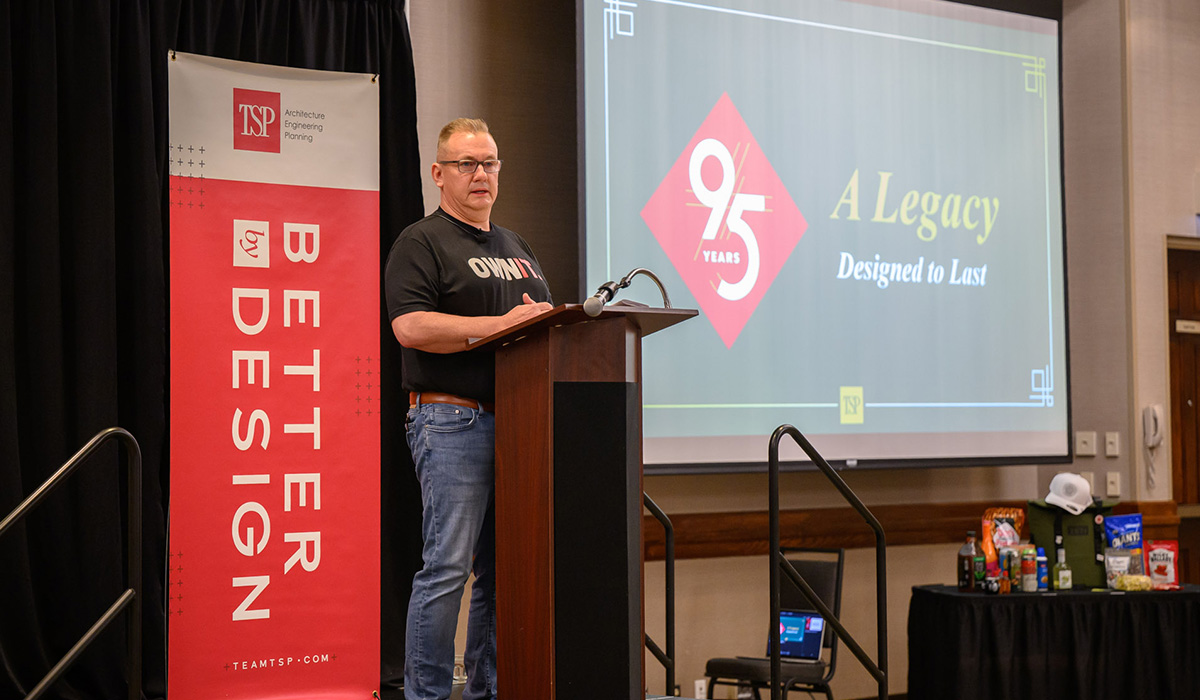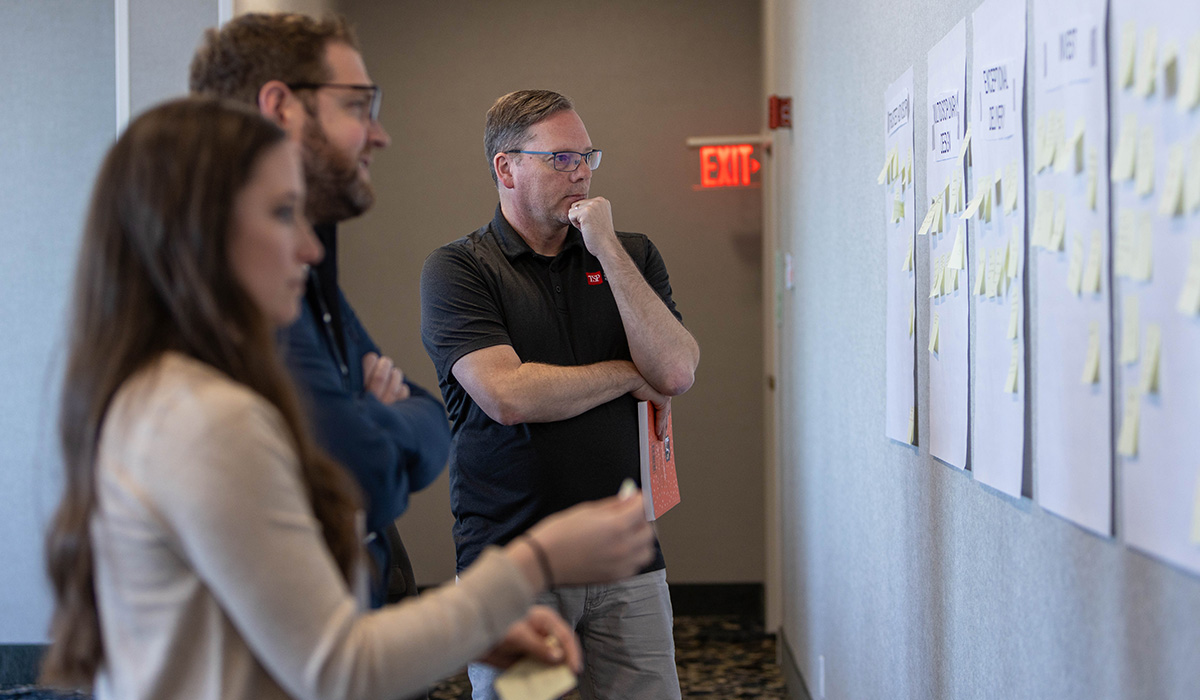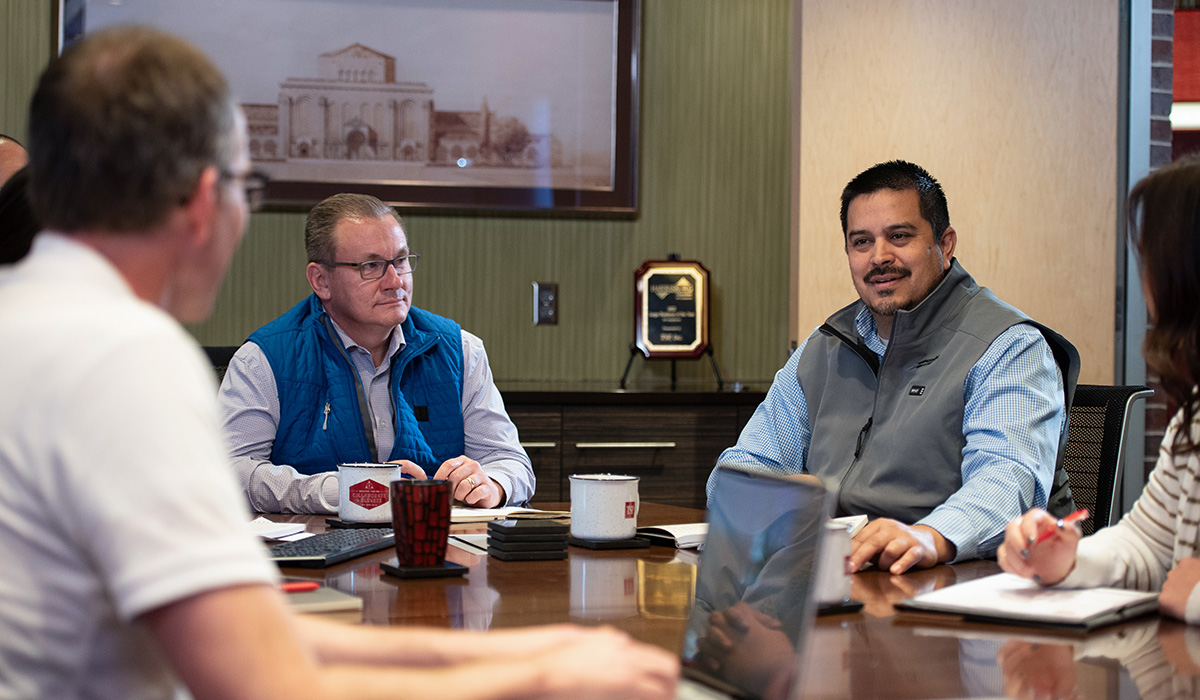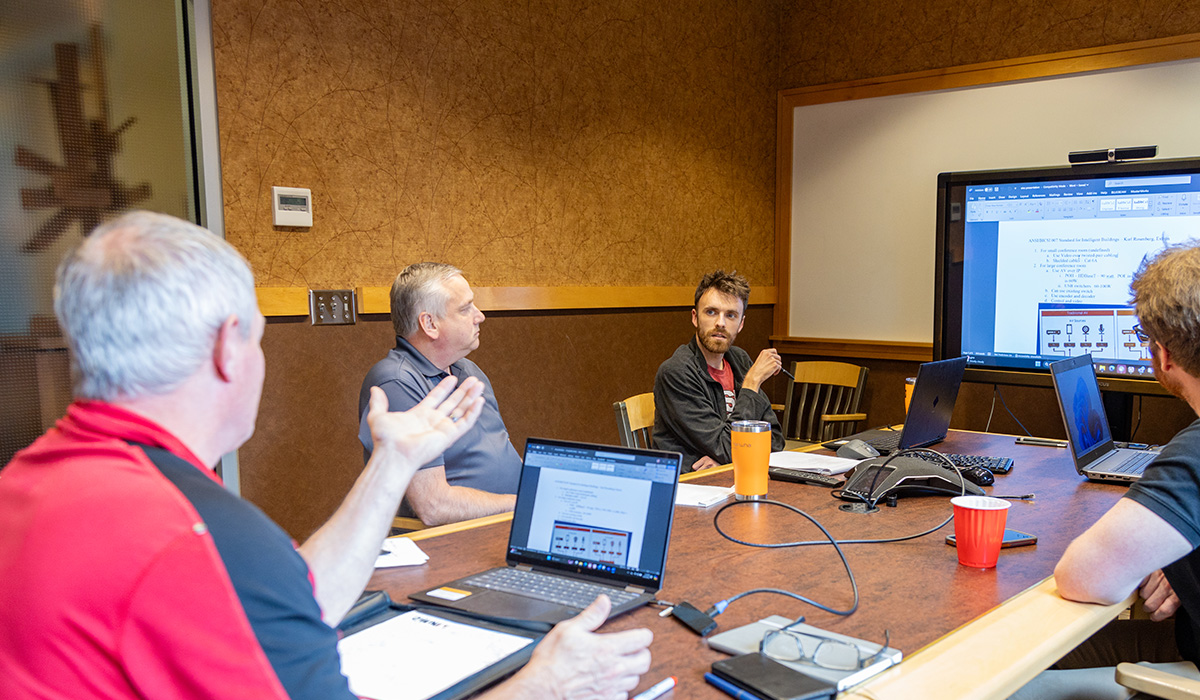Each year at the annual meeting for TSP, Inc., CEO Jared Nesje provides a comprehensive review of the past year and outlines goals for the year ahead.
These firmwide gatherings offer a chance to reflect, recognize achievements, build camaraderie, and refocus collective energy around shared priorities.
But as 2024 came to a close, leadership faced an unexpected challenge in identifying a meaningful focus for firmwide improvement.
“There weren’t too many ‘we need to do better’ items in 2024,” Nesje said.
In a strong year, the issues that did surface were not connected to process failures.
Instead, there were more subtle, recurring patterns: missed communication opportunities, unspoken assumptions, questions of accountability, and moments potentially lacking adequate follow-through.
These occasional moments of frustration were related to less tangible, and very human, matters of engagement.
Nesje knew he was on to something based on his discussions with the TSP operations team, the comments he heard in conversations, and reports on current trends — like a Gallup poll showing that U.S. employee engagement fell to its lowest level in a decade in 2024, with only 31 percent of employees engaged.
The engagement topic took on greater focus after Nesje attended a few CEO conferences where he heard leaders from across the country discuss similar challenges.
One reason employees struggle with engagement, Nesje admits, was not exactly what he wanted to hear.
The CEOs in the room offered the rather direct perspective of “it’s not them, it’s you.”
And with that, TSP’s central theme for 2025 became clear: a renewed commitment to engagement at every level – a message he emphasized during the firm’s annual meeting in Rapid City.
While not a stand-alone solution to disengagement, Nesje looks forward to greater use of technology to make team members faster and more efficient while avoiding its distractions.
Virtual meetings, where attendance does not always equal engagement, are a common example.
Cameras stay off, microphones are muted, and participants multitask across multiple screens.
“We’ve all done it,” Nesje said.
While the behavior isn’t malicious, and moving forward certainly will not involve surveillance or strict rules, the goal is to restore a sense of presence.
“We can all bring a renewed commitment to showing up, listening fully and being accountable — to the work and to each other,” he said. “When we are truly engaged, the quality of our work improves in addition to our collaboration and our TSP culture.”
One day after Nesje’s talk in Rapid City, team members met in small groups for open discussions on how to strengthen engagement at all levels – individual, discipline, team, organization wide, and within the greater community – with the goal of making a positive impact.
“It was a great opportunity to focus on the meaningful outcomes that can emerge in these different areas when we fully engage,” director of practice Kelli Osterloo said.
The team brainstormed a variety of ways to be more present. These initial ideas included a quick morning routine for setting goals, removing distractions or setting designated “do not disturb” time, prioritizing difficult tasks, avoiding multitasking when possible, putting away personal devices, and choosing in-person interactions over digital ones whenever practical.
TSP’s focus on engagement will not come with a process-driven playbook or a multistep checklist that’s placed on every desk.
Instead, it will focus on a shared mindset where all team members are encouraged to ask themselves: “How can I be better today than I was yesterday?”
And that, Nesje said, does not come easily for everyone.
“We are a team of architects, engineers, designers — technical minds, analytical thinkers,” he said.
“By nature, we often don’t gravitate toward abstract or ‘squishy’ ideas. But self-reflection and accountability are essential to the heart of how we grow as individuals and as a company.”
Asking respectful and direct questions, offering honest feedback, and possessing the ability to admit vulnerability are vital, Nesje said.
“Everyone on the team is a leader in some capacity, which requires setting the example,” he said.
“But leading doesn’t mean fun is off the table. As we continue to challenge ourselves, we will aim high and still enjoy the ride.”





